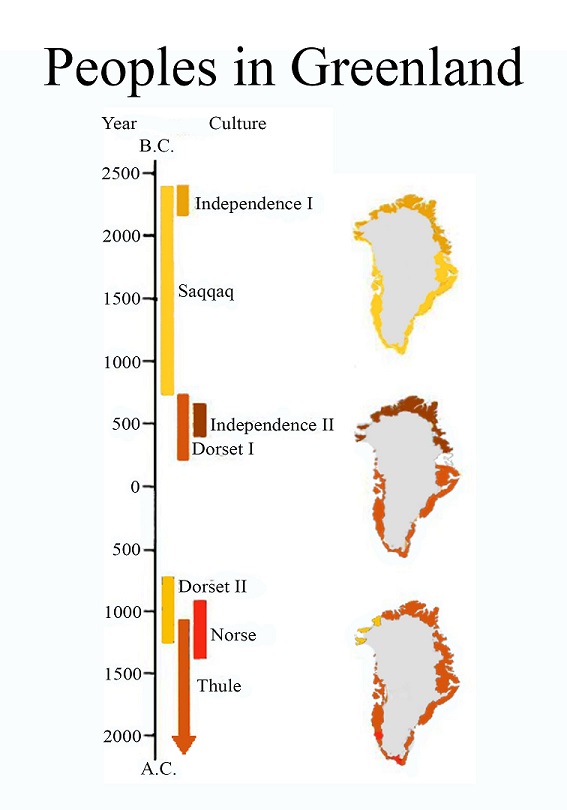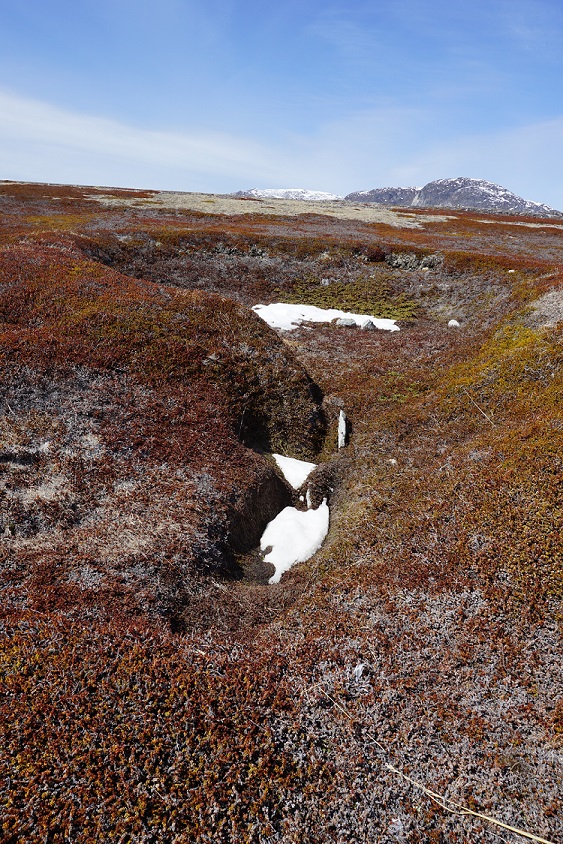The first people (like all the following Inuit cultures) to come to Greenland, came from Arctic Canada and walked into the very North of Greenland. Some of them inhabited all of Greenland, some of them only parts of it.
The remains of these cultures are mostly tools and bones found in the midden outside their houses. We call them Tool Cultures, because their tools, and to some extend the shape of their houses, defines what culture they represent.
Some places archaeologists have started excavating a dwelling house, thinking it is of a late culture; when digging further down in the floor and in the midden, they find remains of earlier cultures. For example that is why we have to call the earliest cultures Independence I and Independence II.
A late culture can have found the foundation of a winter settlement and built their own dwelling on top of that, so archaeologists can be lucky, when thinking they excavate a Thule culture house, then they find remains from an older culture further down.
One of cultures is very different from all the other cultures; the Norse came from east, from Iceland and Europe, instead of from the west, from the North American continent.

Paleo escimos
The late, Danish archaeologist Ejgil Knuth started excavating in Independence Fiord, in the far North of Greenland, shortly after WWII. Here he found ruins of a unknown culture; he named it the Independence Culture. The remains were dated to 700-400 B.C.
When digging further down, he found older remains of human activities and were dated to 2400-2200 B.C. This was yet another unknown culture, so he had to give them numbers; Independence I and Independence II
Later and further South on another site by the settlement of Saqqaq, near Ilulissat, archaeologists found another Inuit Culture that was dated to 2400-750 B.C. They of course named it the Saqqaq Culture.
In Canada in Cape Dorset (today its called Kinngait) archaeologists have described the Dorset culture. Remains of this culture has also been found in Greenland in two different periods 750-300 B.C. and 700-1200 A.C. DNA analysis show that they have more in common with Native Americans than with Inuit.
Norse Greenland
The European feudal culture came to Greenland in the early 980’s; they inhabited Greenland for around 500 years, up until some time during the 1400’s. The Norse period overlapped both Dorset II culture and the Thule culture.
Thule inuit
Around 13-1400’s the Thule Inuit came to Greenland. They are the ancestors of the Greenlandic Inuit of today.

Early Thule culture ruin on the island of Uunartoq, photo Alibak Hard KUJATAA
Colonial history / modern farming
In 1721 the Norwegian/Danish priest Hans Egede come to Greenland. His mission was to find the remaining Norsemen, who must have been Catholics and convert them into Protestantism. He did not find any Norsemen, who had died or left the country 300 years prior.
He then Christianized the Thule Inuit who had inhabited the country for 500 years at the time.
60 years after Hans Egede came to Greenland, another Norwegian, Ander Olsen, started modern Farming in Greenland.
In the beginning of the 1900’s sheep farming was introduced and is today the main source of income for agriculture, with 37 farms (2020) within the region. There is a single farm in Nuuk Fiord.